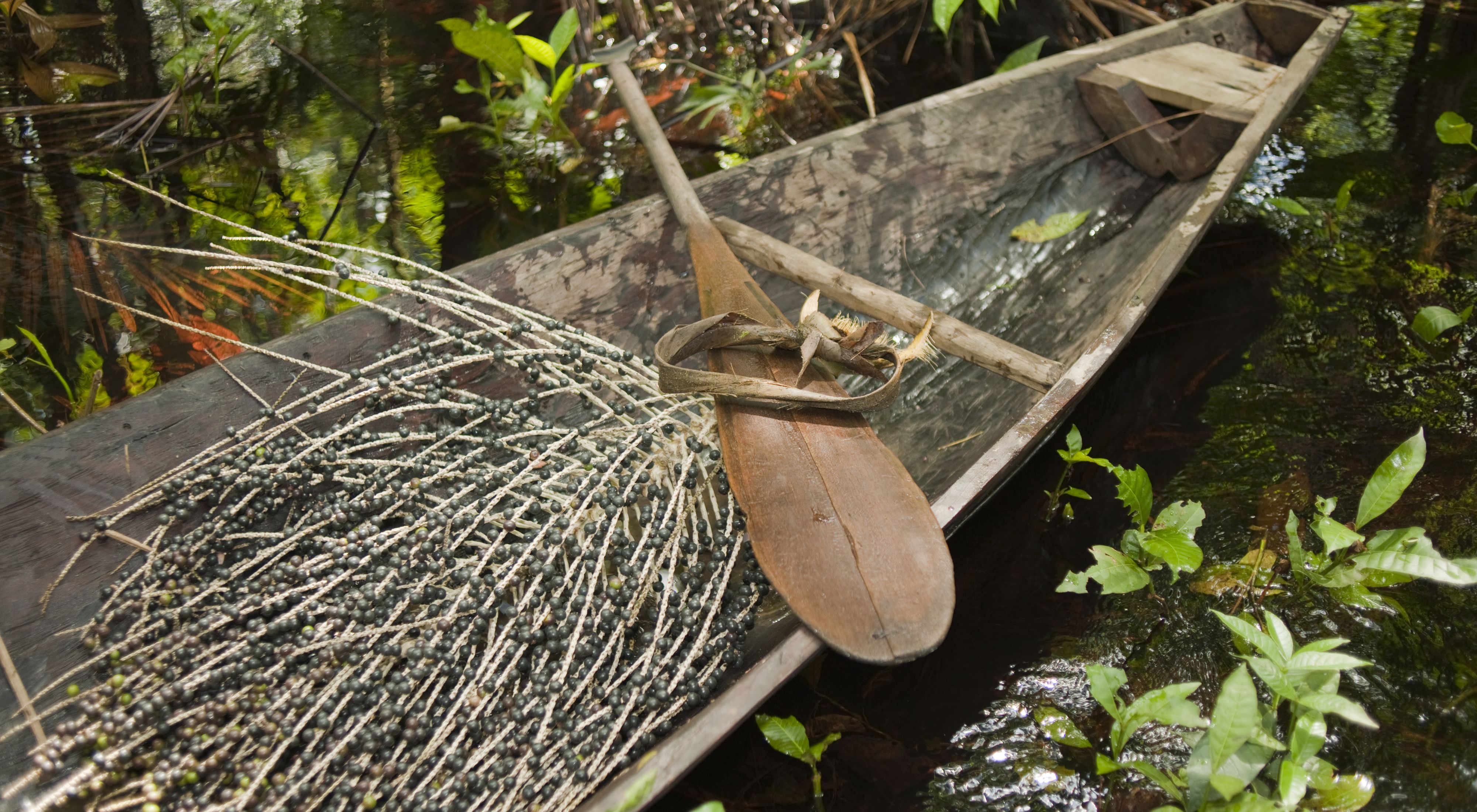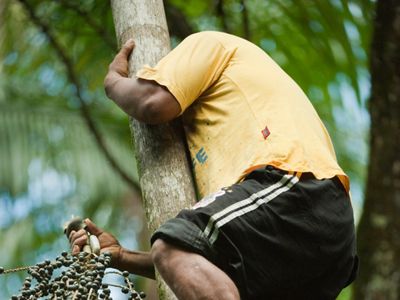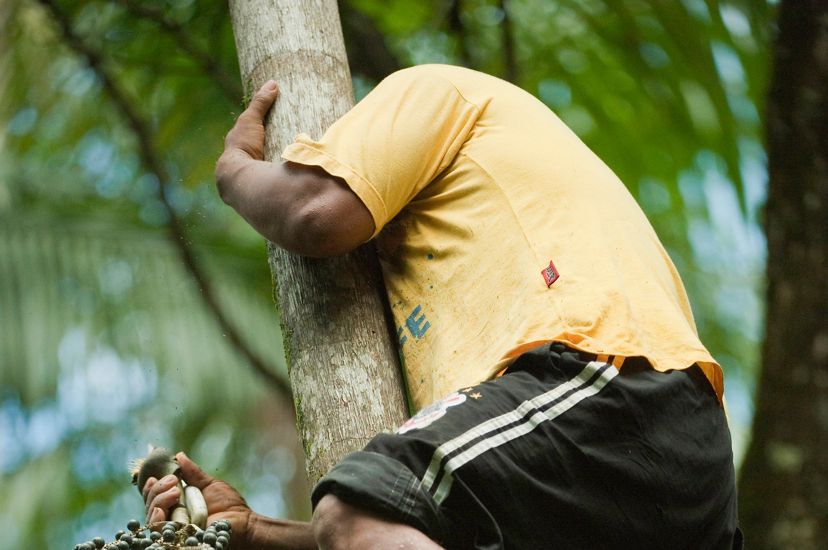Açaí: The Roots of a Super Fruit
Indigenous communities in the state of Amapá have been eating açaí for generations.
It’s been in your local health food co-op for years, but now it’s all over mainstream grocery stores as well: açaí juice, açaí-flavored ice cream and yogurt, açaí bars and açaí supplements. The package usually mentions the words “super food” to describe this berry native to Latin America, and advertisers focus on the fruit’s high levels of antioxidants.
Açaí may be “trendy” in the United States, but for villagers in the Oiapoque indigenous region of northern Brazil, açaí has been a diet staple for centuries. And now that word has gotten out about this nutritionally dense fruit, The Nature Conservancy is working with the villagers to help them make the most of this burgeoning demand.
Tall Trees and Big Knives
Açaí grows on palm trees that tower 15 to 30 meters high. In the Açaízal Village in the Uaça indigenous reserve, the trees that the village is named after are abundant. To reach the branched panicles of berries near the tops, the villagers use the most reliable equipment they have: themselves.
With nothing more than a looped palm leaf tied around their feet to help grasp the trunk and a knife gripped tightly between their teeth, villagers take turns scaling a tree, cutting down a bunch of berries, and slowly sliding back down the trunk. It looks dangerous, but children as young as seven or eight – both boys and girls – begin learning how to harvest this precious fruit.
In this region of Brazil, açaí pulp is served chilled when possible and often mixed with sugar and tapioca. The pulp has the consistency of a thin pudding, and is a deep shade of purple that can stain your teeth and lips like a cheap red wine.
A More Bountiful Harvest
Indigenous communities in the state of Amapá have been eating açaí for generations. But with its booming popularity, locals want to explore the possibility of creating an economic benefit from an abundant natural resource.
A local government agency, the Secretary Extraordinary of Indigenous People (SEPI), recently hosted workshops for two villages that covered techniques to achieve a greater açaí harvest without putting any additional pressure on the ecosystem. And now, local indigenous leaders, with the support of the Conservancy, have identified açaí production as a top priority for the communities’ natural resource management strategy.
Açaízal village chief José Damasceno Karipuna attended one of the workshops, where he learned how to identify trees that needed to be removed and to plant açaí palms five meters apart for maximum efficiency. Because it takes 10 years for new trees to bear fruit, a new commercial enterprise could be several years away. In the meantime, Karipuna is looking forward to an upcoming workshop that will cover strategies for diversifying the açaí products – such as turning it into jellies or ice cream.
With the demand for açaí soaring worldwide, management of these natural areas of açaí palm has become even more important. For the villagers in Açaízal, proper environmental management will help them to increase productivity and ensure they won't have to travel further onto their land to reach enough açaí palms.
Proper management will not only create new opportunities for them sell açaí berries and other products at a local scale, but could also help them reach buyers that want the berries for national and international markets.
“It’s an ongoing project, but I hope that eventually we can sell it and have the extra benefits for the community,” Karipuna said.
Villagers in Açaízal are also exploring other income-generating activities, such as beekeeping. The Conservancy sponsored workshops on beekeeping and, through partner organization Peabiru Institute, helped organize a field trip to São Pedro dos Bois, a quilombo village in the state of Amapá where honey production had already been put into practice.
“I was inspired by the other village – it was inspiring to see it all put into practice,” Evandro Karipuna said. “The other community was already generating income from the bees and it was improving their quality of life. We really want to see that happen here and to have our kids doing it, too.”
A Lasting Relationship
The Conservancy has been working with indigenous communities in the Oiapoque region on natural resource management for nearly a decade. Over the years, The Nature Conservancy has worked to combine its own scientific expertise with the villagers’ traditional knowledge to create “ethnomaps” of the region, craft plans to combat the overharvesting of certain species, and develop strategies to deal with territorial threats, such as a new road that transects their traditional lands.
By working directly with communities to provide technical support for landscape and natural resource management and by promoting the creation of Brazil’s first ever national policy on the environmental management of indigenous lands, we hope to ensure communities have the political and economic tools in place to sustainably manage their resources now and far into the future.



